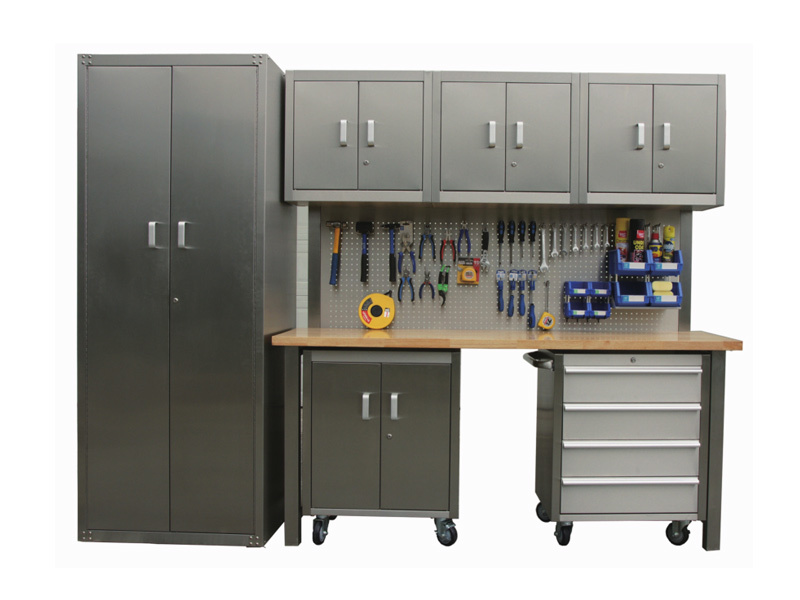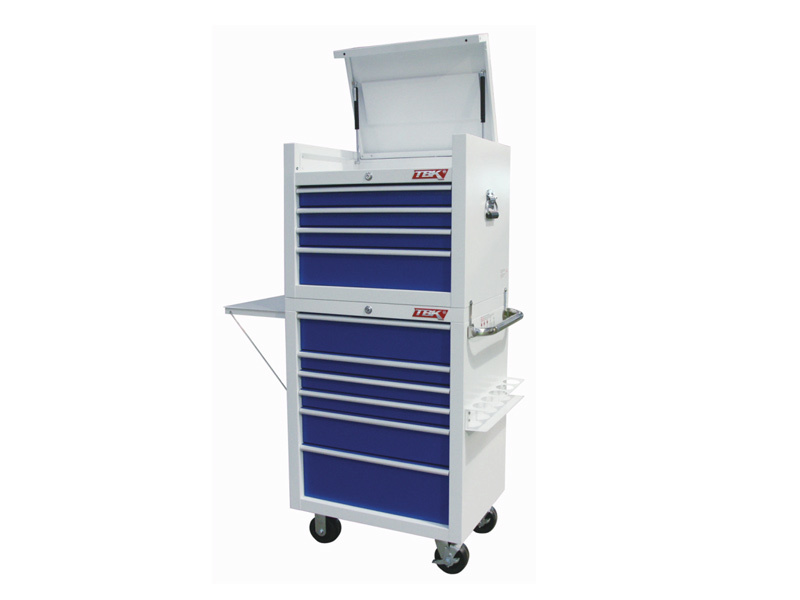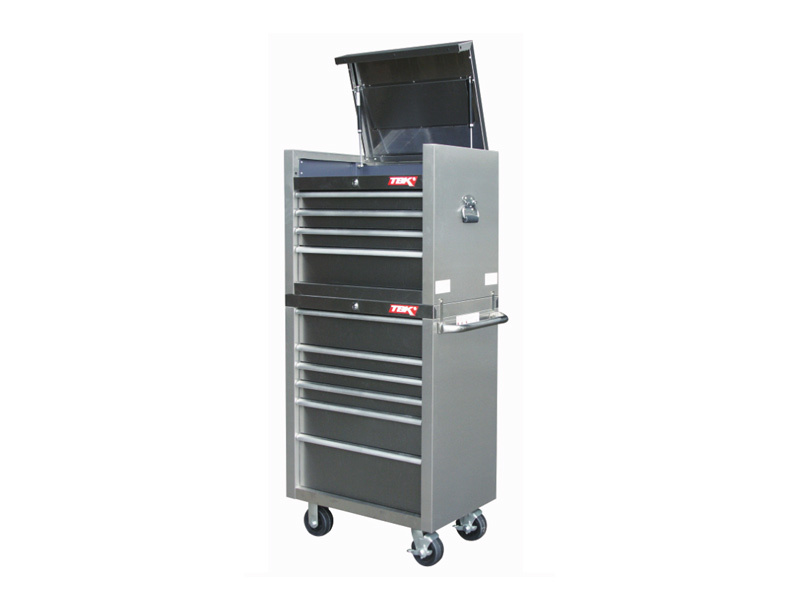Why a Tool Cart is Essential for Your Workshop Efficiency
Release time:
Apr 25,2025
Why a Tool Cart is Essential for Your Workshop Efficiency Table of Contents 1. Understanding the Importance of a Tool Cart in a Workshop 2. Key Features to Look for in a Tool Cart 2.1 Material Quality and Durability 2.2 Size and Capacity 2.3 Mobility and Maneuverability 2.4 Storage Solutions and Organization 3. Benefits of Using a Tool Cart 3.1 Enhanced Efficiency and Productivity 3.2 Improved Saf

Why a Tool Cart is Essential for Your Workshop Efficiency
Table of Contents
1. Understanding the Importance of a Tool Cart in a Workshop
2. Key Features to Look for in a Tool Cart
2.1 Material Quality and Durability
2.2 Size and Capacity
2.3 Mobility and Maneuverability
2.4 Storage Solutions and Organization
3. Benefits of Using a Tool Cart
3.1 Enhanced Efficiency and Productivity
3.2 Improved Safety in the Workshop
3.3 Streamlined Workflow
4. Choosing the Right Tool Cart for Your Needs
4.1 Different Types of Tool Carts
4.2 Budget Considerations
5. Maintenance Tips for Your Tool Cart
6. Frequently Asked Questions (FAQs)
7. Conclusion
1. Understanding the Importance of a Tool Cart in a Workshop
A **tool cart** serves as an indispensable asset in any workshop environment, whether for hobbyists or professional craftsmen. The importance of a well-designed tool cart cannot be overstated; it facilitates organization, enhances workflow, and ultimately contributes to better project outcomes. When tools and materials are easily accessible, time wastage diminishes, allowing for a more focused approach to tasks.
Furthermore, a tool cart can aid in promoting a tidy workspace, which is essential for maintaining safety standards. In workshops teeming with equipment, the risk of accidents increases manifold. A tool cart keeps essential tools at hand while minimizing clutter, striking a balance between accessibility and safety.
2. Key Features to Look for in a Tool Cart
When selecting a tool cart, it is essential to consider various features that align with your workshop needs. The right tool cart should not only fulfill your storage requirements but also enhance your overall efficiency.
2.1 Material Quality and Durability
A tool cart’s longevity largely depends on the materials used in its construction. Look for carts made from robust materials such as steel or high-grade plastic. Steel carts, while heavier, offer superior durability and can withstand the rigors of a busy workshop environment. On the other hand, lighter plastic carts may be more mobile but could lack some strength.
2.2 Size and Capacity
The size of your tool cart should be proportional to your workshop space and the variety of tools you possess. A compact cart is suitable for smaller workshops, while larger spaces might benefit from more extensive carts with multiple shelving options. Ensure that the cart has enough capacity to hold both your frequently used and less commonly used tools.
2.3 Mobility and Maneuverability
A tool cart should be easy to move around your workspace. Features like swivel casters can enhance mobility, ensuring you can transport tools effortlessly from one area to another. Locking wheels are also a beneficial feature, allowing you to stabilize the cart when in use.
2.4 Storage Solutions and Organization
Every workshop requires organized storage solutions. Look for carts that feature drawers, shelves, and compartments that allow you to categorize your tools effectively. This organization can be critical in reducing time spent searching for the right tool and enhancing overall productivity.
3. Benefits of Using a Tool Cart
The advantages of incorporating a tool cart into your workshop are both immediate and long-lasting.
3.1 Enhanced Efficiency and Productivity
With a tool cart, tools and materials are within arm’s reach, which drastically reduces time spent searching for items. This accessibility leads to increased efficiency and productivity, enabling you to complete tasks more swiftly and effectively.
3.2 Improved Safety in the Workshop
A clutter-free workspace is vital for safety. By utilizing a tool cart, you minimize the risk of accidents caused by misplaced tools or equipment. Having a designated space for each tool not only makes it easier to find what you need but also helps in maintaining a clear and safe working environment.
3.3 Streamlined Workflow
A tool cart can significantly streamline your workflow. By keeping all necessary tools organized and easily accessible, you can transition between tasks with minimal downtime. This fluidity in operations allows for a more coherent working pace and aids in maintaining project momentum.
4. Choosing the Right Tool Cart for Your Needs
Selecting the perfect tool cart can be daunting given the plethora of options available. Below are crucial considerations to simplify your decision-making process.
4.1 Different Types of Tool Carts
Tool carts come in various types, each catering to different needs. Some popular varieties include:
- **Mechanic's Tool Carts**: Designed for automotive repair, these feature specialized storage for sockets and wrenches.
- **Utility Carts**: These versatile carts can be used for various tasks, from organizing tools to serving as mobile workstations.
- **Heavy-Duty Tool Carts**: Ideal for industrial use, these carts are built to handle substantial weight and endure rough conditions.
It is essential to assess your specific requirements before choosing the type of tool cart that best suits your workshop.
4.2 Budget Considerations
Budget is a significant factor when selecting a tool cart. While it can be tempting to purchase the cheapest option, investing in a high-quality cart can save you money in the long run through durability and functionality. Set a budget and research options within that range to find the best value for your investment.
5. Maintenance Tips for Your Tool Cart
To prolong the life of your tool cart, regular maintenance is essential. Here are some tips to keep your cart in optimal condition:
- **Regular Cleaning**: Keep your cart free of dust and debris. A simple wipe-down with a damp cloth can prevent corrosion and maintain its aesthetic appeal.
- **Check for Wear and Tear**: Regularly inspect wheels, drawers, and surfaces for signs of damage. Addressing issues promptly can prevent more significant problems down the line.
- **Lubricate Moving Parts**: Ensure that all moving components, such as wheels and drawer slides, are lubricated to prevent wear and ensure smooth operation.
6. Frequently Asked Questions (FAQs)
What is a tool cart used for?
A tool cart is designed to store and organize tools, making them easily accessible during various tasks in the workshop.
Can a tool cart improve my workshop's efficiency?
Yes, by keeping your tools organized and within reach, a tool cart significantly enhances productivity and workflow.
What features should I look for in a tool cart?
Key features include material quality, size and capacity, mobility, and effective storage solutions.
Are there different types of tool carts?
Yes, tool carts come in various types, including mechanic's carts, utility carts, and heavy-duty carts, each designed for specific needs.
How can I maintain my tool cart?
Regular cleaning, checking for wear and tear, and lubricating moving parts are essential maintenance practices.
7. Conclusion
In conclusion, a **tool cart** is an essential component of any workshop aiming for efficiency and organization. With the right features, a tool cart can enhance productivity, improve safety, and streamline workflow. By selecting the appropriate cart for your needs and maintaining it properly, you can create a workspace that is not only functional but also enjoyable to work in. Investing in a quality tool cart is a decision that will pay dividends in both time saved and improved output.
More information




